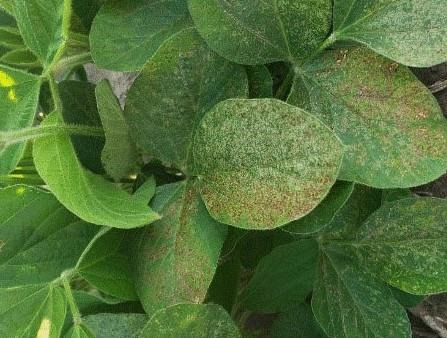- Leaves change in response to heat. In order to prevent water loss, plant cuticles become waxier in response to heat or drought stress. The greater wax content makes it more difficult for water-based spray solutions to penetrate the plant. In addition, the leaf angle of many plants changes in response to heat or drought stress (Figure 1). Often, this results in less herbicide contacting the leaf surface to enter the plant.
Management: Using maximum labeled rates of herbicides and surfactants can help get more spray solution into the plant, increasing effectiveness. Spraying during the cooler parts of the day will reduce the impact of altered leaf angle.

Figure 1. Velvetleaf usually changes leaf angles at night, but the leaves on these plants are vertical in response to high temperatures.
- Crop response to foliar applied, non-translocated herbicides is greater in hot temperatures. When applied in hot, humid conditions, contact herbicides, such as Cobra, Liberty, or Reflex will likely result in greater foliar injury to crops, but also greater weed control (Figure 2).
Management: If possible, postpone application of these herbicides if temperatures are over 90°F. If weed size requires immediate herbicide application, reduce the rate of herbicide and adjuvant, and apply later in the day, when the air temperature will decrease after application.

Figure 2. Contact herbicides such can cause bronzing of soybean leaves when applied post-emergence. Photo taken 1 week after an application that included flumiclorac (Resource, Perpetuo, others).
- Herbicide volatility increases with high temperatures and low humidity. Herbicides in group four, such as dicamba and 2,4-D are prone to volatility, which means the herbicide becomes a vapor and can move long distances with slight breezes. Volatility of these herbicides increases as temperature rise above 60°F and is greatest at temperatures above 90°F.
Management: Avoid applying these herbicides when temperatures are over 90°F. This may occur during morning or late afternoon hours, when temperature inversions are likely to occur. Herbicides should not be sprayed during inversions. Use larger spray droplets to reduce evaporation, which can be accomplished by reducing spray pressure or increasing nozzle orifice size.
Source : ksu.edu